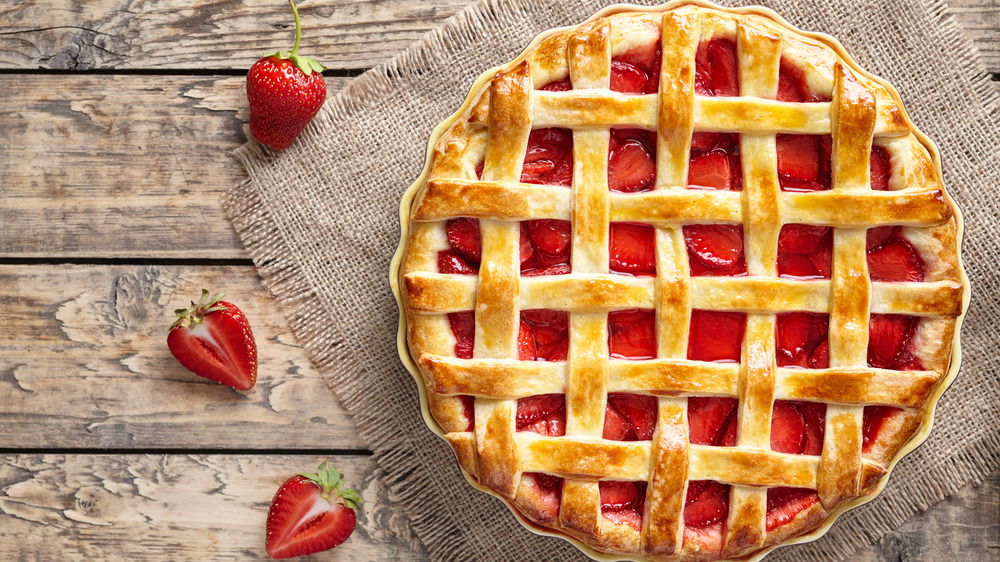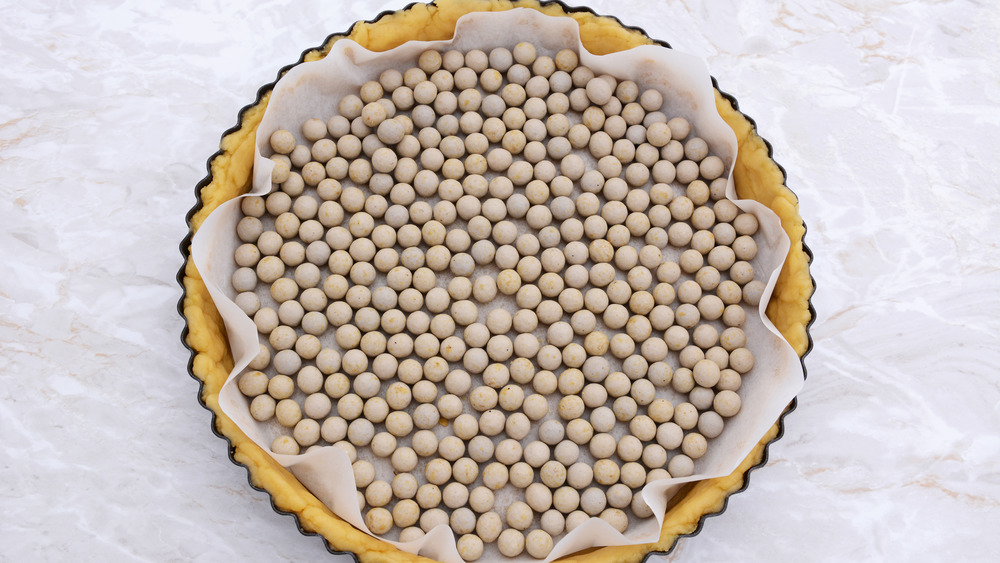The Biggest Mistake You're Making When Blind Baking Pie Crust
We may receive a commission on purchases made from links.
If you've ever baked a pie — and we mean skipped the store-bought graham cracker crust and committed to crafting the real, flaky deal from scratch — then you likely know what true annoyance is in the kitchen. There's nothing quite worse than pie dough that puffs up, and up, and up, and then just crumbles once you load in that sweet apple filling or fresh blueberry jam.
That's where the first problem lies, in the filling itself. It's crucial to blind bake a pie with a fruity or custard filling, since the crust may get soggy at the bottom and overdone at the top (via The Spruce Eats). Partially pre-baking a pie crust is key to a just-right flake to your dish, but along with that comes a little known secret step that the average amateur baker may not know.
Don't worry; we'll make sure you're fully prepared for the next time you dedicate an afternoon to perfecting your pastry crust. The best part? You don't even have to buy anything — this hack should be easy as pie as it only uses what's already in your pantry.
A little bit of weight is the secret to a perfectly-filled pie
Oftentimes the issue with pre-baking your crust is that there's nothing there to hold the shape of the pie. Without a filling to hold it down, a crust will likely start to puff up and expand, or maybe even slide down in the pie dish.
To prevent the awkward exchange that is bringing a lackluster dessert to your next family gathering, try weighing down your crust when blind baking it, says Kitchn. You can use traditional pie weights, or get innovative with a pound or two of uncooked beans. All you have to do is line your crust with some parchment paper, layer in some weight to give the pie some shape, and bake your crust part of the way. Once the edges are golden, you can dump out the pie weights (be careful!) and finish baking the crust as usual.
Bon Appétit also suggests adding a new item to your overflowing cupboard with a set of industrial steel balls, which you can grab off the shelf of your local hardware store for cheap. And if you want to get really innovative (or if your pantry is just looking pretty bare-bones these days), try topping the parchment paper with loose sugar instead (via Baking Kneads).

